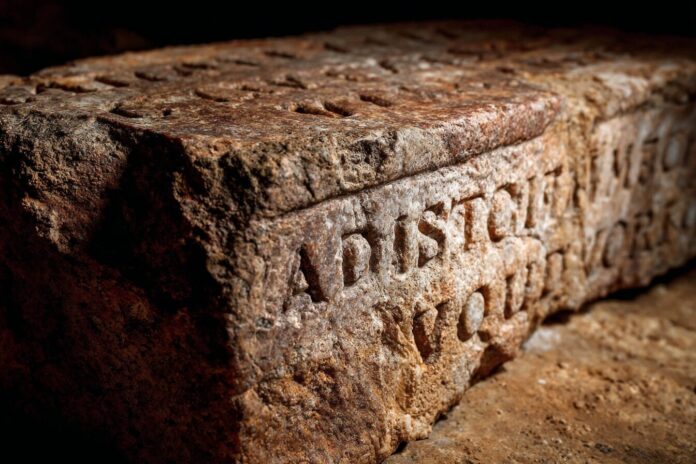How Artificial Intelligence Is Revolutionizing Historical Decoding
For centuries, Latin inscriptions have provided direct glimpses into the Roman world, offering historians invaluable insights into language, society, and governance. Most importantly, these ancient texts serve as unique time capsules that combine the essence of historical narratives with the mysteries of lost eras. Because the elements and the passage of time have taken a toll on these fragile records, many inscriptions now exist only in fragmented forms.
In light of these challenges, artificial intelligence has emerged as a transformative ally. By leveraging advanced neural networks, AI systems can now restore and reinterpret these texts with remarkable precision. Transitioning from traditional manual methods, the new AI tools create a deeper connection between history and technology, thereby opening exciting avenues for research and interpretation.
The Power of Aeneas: DeepMind’s Breakthrough AI Tool
In July 2025, Google DeepMind unveiled Aeneas, a generative neural network meticulously designed to decipher and contextualize ancient Latin texts. Because Aeneas integrates thousands of Latin inscriptions from diverse sources, it adeptly predicts missing parts and even assists in dating and localizing inscriptions. Most importantly, its rapid analytical capabilities now condense tasks that once demanded weeks or months into mere moments.
Moreover, Aeneas’s design highlights how sophisticated algorithms can be married with historical context. The AI not only examines textual parallels across vast datasets but also synthesizes visual evidence from artifact provenance. Therefore, by combining these approaches, Aeneas sets a new benchmark in the restoration and interpretation of historical documents, as evidenced by leading studies [1] [2].
A Closer Look at the Res Gestae Divi Augusti
Among the numerous historical texts analyzed by AI, the Res Gestae Divi Augusti remains particularly significant. Originally inscribed on bronze pillars in Rome, this autobiographical document of Emperor Augustus not only recounted his achievements but also served as a medium to communicate imperial ideology. Because this inscription stands as a critical piece of Roman heritage, scholars have been eager to reexamine its content and context.
Therefore, by processing this text through Aeneas, researchers have discovered previously unnoticed nuances in language and context. The AI’s sophisticated analysis revealed that the inscription carries a pronounced legal tone, intertwining personal narrative with the strategies of statecraft. This discovery is vital because it demonstrates that Augustus crafted his words deliberately to affirm both his personal legacy and the robustness of the imperial administration [3].
Expanding Historical Context Through AI Insights
Besides refining textual restorations, AI-driven approaches like those seen in Aeneas offer broader contextual insights. For example, by integrating information about the physical location and condition of an inscription, the technology refines its predictions for any remaining gaps. Most importantly, such integration provides a richer historical narrative and enhances our understanding of socio-political dynamics in ancient Rome.
Because of these advancements, every recovered fragment now contributes to a more detailed panorama of the ancient world. In practice, these improved restoration techniques allow modern scholars to visualize a more complete cultural landscape, offering a multi-dimensional perspective on Roman life that was once obscured by gaps and deterioration. As noted in additional research from sources like this informative video, the synergy of visual and textual analysis is pushing historical research to new heights.
Impact on Roman Scholarship and Wider Historical Research
The transformative power of AI like Aeneas is now being felt across the entire field of Roman studies. Traditional methods of deciphering historical inscriptions were labor-intensive and often riddled with uncertainties. Most notably, the new approach not only accelerates data processing but also enhances the accuracy of historical deductions. Because researchers now have better tools at their disposal, they can allocate more time to explore broader patterns and cultural shifts than before [3].
Furthermore, the advent of such technology is enabling a more inclusive interpretation of ancient society. By making even the lesser-known voices of early Roman life accessible, AI is contributing to a comprehensive understanding of the era. Consequently, the ripple effects of these breakthroughs extend beyond archaeology, influencing fields such as classical studies, linguistics, and even legal history.
Challenges and The Road Ahead
Despite the promising advancements, challenges remain. AI models like Aeneas depend on vast, high-quality datasets, and any gaps in this information can lead to inaccuracies. Because historical texts often carry subtle nuances and ambiguities, even the most advanced AI may miss essential contextual clues. Therefore, the collaborative efforts between human historians and AI researchers are more crucial than ever.
Moreover, as researchers push the boundaries of what AI can achieve, continuous improvements in training data and algorithmic design will be necessary. Transitioning into the future, the integration of human intuition with machine precision holds the key to further breakthroughs. Besides that, ongoing dialogue between archaeologists and technologists, as reflected in discussions like those found on The Megiddo Mosaic, will shape the next frontier in historical research.
Looking Forward: The Future of AI in Historical Research
Moving forward, the convergence of machine learning and historical inquiry promises to unlock new chapters in the annals of human civilization. Because AI can process and analyze vast quantities of fragmented data swiftly, scholars are now better equipped to uncover hidden layers of history. Most importantly, this innovative approach challenges and redefines traditional methodologies in epigraphy and archival research.
In conclusion, the fusion of artificial intelligence with classical studies is more than a technological upgrade—it is a radical transformation that deepens our collective grasp of history. Therefore, as new discoveries emerge and refined techniques develop, the dialogue between past and present continues to evolve, ensuring that the legacy of ancient Rome remains ever accessible to modern minds.
See Also
- AI helps Latin scholars decipher ancient Roman texts — The Economic Times
- AI reveals new details about a famous Latin inscription — Science News
- Google’s new AI deciphers missing Latin words in ancient Roman texts — The Independent
- AI and the Restoration of Ancient Texts — YouTube Insight
- The Megiddo Mosaic — An Exploration of AI in Archaeology
References: The Independent, The Economic Times, Science News.



